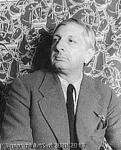Giorgio De Chirico
Giorgio De Chirico
Style: Metaphysical Art; Neo-Baroque; Cubism; Neo-Classicism; Surrealism;
Place: Volos
Born: 1888
Death: 1978
Biography:
Early Life and Influences
Giorgio De Chirico, a renowned Italian artist, was born on July 10, 1888, in Volos, Greece, to a Genoan mother and a Sicilian father. His early life was marked by the study of art at Athens Polytechnic under the guidance of influential Greek painters Georgios Roilos and Georgios Jakobides. This foundation would later shape his unique artistic style.
The Metaphysical Art Movement
In 1910, De Chirico pioneered the scuola metafisica art movement, which profoundly influenced the Surrealists. His works from this period, characterized by haunting moods and dreamlike scenarios, are exemplified in paintings such as The Vexations of the Thinker (available on Wikioo.org's platform) and The Enigma of the Hour (viewable on Wikioo.org). These works evoke a sense of mystery, often with sharp contrasts of light and shadow.
Post-Metaphysical Period
After 1919, De Chirico's interest shifted towards traditional painting techniques, adopting a neoclassical or neo-Baroque style. This change is evident in his later works, which, though not receiving the same critical acclaim as his earlier pieces, demonstrate a mature evolution in his artistic approach.
Legacy and Influence
De Chirico's impact on the Surrealist movement is undeniable, with artists like André Breton being influenced by his metaphysical paintings. Though his later work was not as widely acclaimed, De Chirico remains a pivotal figure in the history of modern art. His legacy continues to inspire, with his works being part of collections around the world, including The Museum of Giorgio De Chirico, which now stands near the Spanish Steps in Rome.
- Explore more of Giorgio De Chirico's works on Wikioo.org
- Discover the Metaphysical Art Movement and its influence on Surrealism through this insightful article on Wikioo.org
- Learn more about De Chirico's life and works on Wikipedia
- The Vexations of the Thinker - The Enigma of the Hour - The Song of Love (a detailed analysis of this piece is available on Wikioo.org)
Wikipedia link: Click Here














